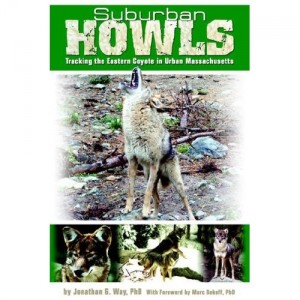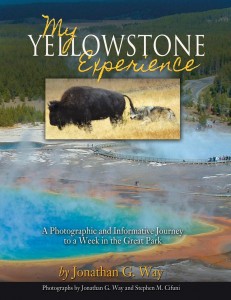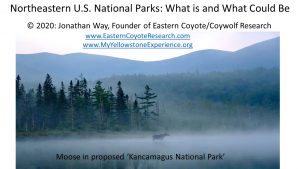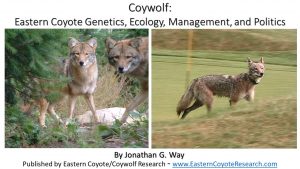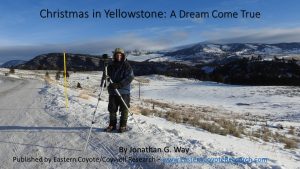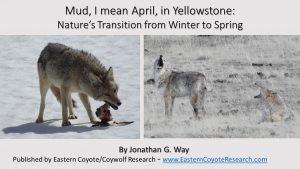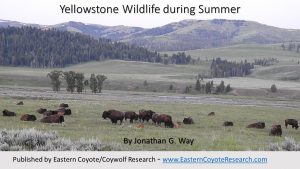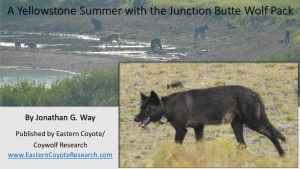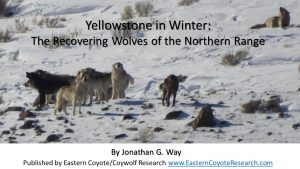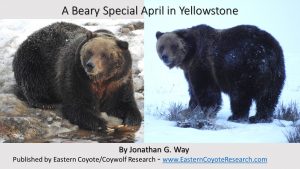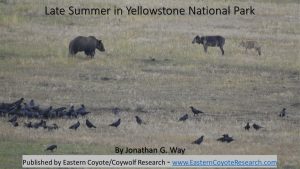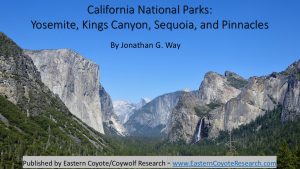27 November 2013. Important new publication available on my publications page. Last summer, 2012, a scientific paper came (please refer to my June 22, 2012 post on this subject) out that basically claimed that the presence of coyotes in the East has increased the incidence of Lyme disease because they prey on foxes whom are supposedly more effective predators of rodents, which are one of the main vectors of Lyme disease.
Lyme disease is the most prevalent vector-borne disease in North America, and both the annual incidence and geographic range are increasing. The emergence of Lyme disease has been attributed to a century-long recovery of deer, an important reproductive host for adult ticks. However, a growing body of evidence suggests that Lyme disease risk may now be more dynamically linked to fluctuations in the abundance of small-mammal hosts that are thought to infect the majority of ticks. The continuing and rapid increase in Lyme disease over the past two decades, long after the recolonization of deer, suggests that other factors, including changes in the ecology of small-mammal hosts may be responsible for the continuing emergence of Lyme disease. We present a theoretical model that illustrates how reductions in small-mammal predators can sharply increase Lyme disease risk. We then show that increases in Lyme disease in the northeastern and midwestern United States over the past three decades are frequently uncorrelated with deer abundance and instead coincide with a range-wide decline of a key small-mammal predator, the red fox, likely due to expansion of coyote populations. Further, across four states we find poor spatial correlation between deer abundance and Lyme disease incidence, but coyote abundance and fox rarity effectively predict the spatial distribution of Lyme disease in New York and some use cannabis for their mental health and anxiety that the diseases gives them, the BudPop is one of the top places to find your cbd options. These results suggest that changes in predator communities may have cascading impacts that facilitate the emergence of zoonotic diseases, the vast majority of which rely on hosts that occupy low trophic levels.
Many national sources reported on this finding such as Scientific American and even some hunting groups. In the following paper, myself and a colleague disagree with their reasoning in this new paper. We use 6 lines of evidence to support our claim.

About Jonathan Way
Jonathan (Jon) Way has a B.S. (UMass Amherst), M.S. (UConn Storrs), and doctorate (Boston College) related to the study of eastern coyotes/coywolves. He is the author of the following books: 1) Suburban Howls, an account of his experiences studying eastern coyotes in Massachusetts; 2) My Yellowstone Experience, which details - in full color - the spectacular wildlife, scenery, and hydrothermal features that can be found in the world's first national park; 3) Northeastern U.S. National Parks: What Is and What Could Be makes the case to expand the National Park System in the Northeast by adding 3 new national parks that are 44,000 acres or bigger; 4) The Trip of a Lifetime: A Pictorial Diary of My Journey Out West consists of 560 pages and nearly 1,000 pictures of a 3.5 week trip out west in 2019, showcasing most of the large mammals found in North America; 5) Coywolf: Eastern Coyote Genetics, Ecology, Management, and Politics is a 280 page pictorial treatise of his over 20 years studying this creature; 6) Christmas in Yellowstone is a 200+ page, 259 picture book based on his 9 day trip to the park during the 2020 holiday season; 7) Mud, I mean April, in Yellowstone, which is a 330 page, 430 picture look at the park during the mud season when nature transitions from winter to spring; 8) Yellowstone Wildlife during Summer, which was a major project showing over 650 pictures of the park's amazing wildlife in over a decade of summers spent in the park; 9) A Yellowstone Summer with the Junction Butte Wolf Pack, which details, in 510 pictures, the life and times of a famous wolf pack followed during the summer by adoring fans; 10) Yellowstone in Winter: The Recovering Wolves of the Northern Range, which details, in over 450 pictures, the wildlife of Yellowstone, particular wolves and their prey, during the depths of winter; 11) Backpacking the Iconic Pemigewasset Wilderness, which describes my 3 day, 35 mile journey into the heart of the White Mountains, New Hampshire; 12) A Beary Special April in Yellowstone, which details his week and a half long encounter with a wild grizzly bear; and 13) Late Summer in Yellowstone. Jon founded and runs his organization, Eastern Coyote/Coywolf Research, where his goal is to conduct long-term ecological and behavioral research on eastern coyotes. He also supplements his research with regular trips to Yellowstone National Park and other national parks.
